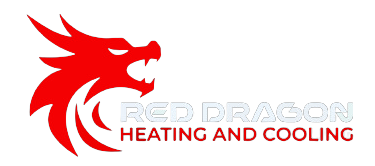- 518.348.9000
- [email protected]
- 117 Van Rd Gloversville,NY 12078
New A/C Installation: What does it cost and what should you look for in your HVAC partner?
What should a new A/C sytem cost?
In the Gloversville, Johnstown and surrounding areas a new A/C system will typically cost between $4000-$8000 depending on home size and efficiency rating.
Thinking about a new A/C installation for your home this summer? It’s crucial to choose the right system to ensure optimal cooling and energy efficiency. Proper installation not only enhances comfort but also significantly reduces energy costs.
Selecting a new A/C unit involves evaluating factors like size, efficiency ratings, and professional installation services. An improperly sized unit can lead to poor performance and increased utility bills. Consulting with an expert can help you make an informed decision that fits your specific needs.
Investing in a high-efficiency system makes a big difference in long-term savings. While upfront costs might be higher, the reduction in energy consumption and maintenance expenses ensures a worthwhile investment. Choose wisely and enjoy a cooler, more cost-effective home environment.

518 Red Dragon Service Areas Include :

Amsterdam
Amsterdam New A/C Installation

Gloversville
Gloversville New A/C Installation

Johnstown
Johnstown New A/C Installation

Broadalbin
Broadalbin New A/C Installation

Fonda
Fonda New A/C Installation
Mayfield
Mayfield New A/C Installation
Northville
Northville New A/C Installation

Planning Your New A/C Installation
Proper planning is crucial for a successful A/C installation. Key considerations include evaluating the space for the unit, selecting a suitable system, understanding associated costs, and setting a realistic timeline.
Assessing Your Space
Evaluating your space determines the type and size of the A/C unit needed. Measure the room’s dimensions to calculate the square footage. Consider the room’s layout, insulation quality, and sun exposure. Space assessment ensures optimal cooling efficiency and prevents energy wastage.
Use professional tools or consult an HVAC specialist for accurate measurements. Rooms with multiple windows or high ceilings might require more powerful units.
Choosing the Right A/C System
Selecting the right A/C system is critical. Options include central, ductless mini-split, and window units. Central air systems are effective for whole-house cooling but require existing ductwork. Ductless mini-splits provide flexible zoning without ducts and are energy-efficient. Window units are suitable for small spaces or single rooms.
Compare energy efficiency ratings (EER or SEER) to choose an eco-friendly model. Factor in any specific requirements like advanced air filtration or smart connectivity.
Understanding Installation Costs
Installation costs vary based on the type and complexity of the A/C system. Central A/C installations often come with higher labor costs due to ductwork requirements. Ductless mini-splits might have higher upfront costs but lower long-term operational expenses. Window units are generally less expensive but less powerful.
Itemize potential expenses including equipment, labor, permits, and any necessary upgrades to electrical systems. Request detailed quotes from multiple contractors to ensure fair pricing.
Scheduling and Timelines
Setting a realistic timeline is essential. High-demand seasons can lead to scheduling delays. Ideal times for installation are spring or fall when HVAC companies are less busy. Allow time for pre-installation assessments, acquiring permits, and unexpected changes.
Coordinate closely with your chosen contractor. Ensure all required materials and preparations are in place before the installation date to avoid unnecessary delays.
Executing the Installation
Careful preparation and adherence to safety protocols are critical for a successful A/C installation. Each phase, from preparation to final testing, plays a crucial role in the overall functionality and safety of the system.
Preparation Steps
Proper preparation ensures a smooth installation. Start by gathering all necessary tools and materials, such as screwdrivers, wrenches, and the A/C unit itself.
Checklist:
- Verify the electrical system is compatible with the A/C unit.
- Ensure all components are present and undamaged.
- Clear the installation area of any obstacles.
Next, review the A/C unit’s manual. Understanding the specifications, dimensions, and requirements detailed therein will help avoid any errors.
Finally, communicate with all team members about their specific roles to maintain efficiency.

Installation Process
Begin by installing the mounting hardware securely. This provides a sturdy base for the A/C unit.
Mount the indoor unit first. Ensure proper alignment and secure it with the compatible fasteners.
Next, install the outdoor unit, taking care to place it on a flat surface with adequate ventilation.
Steps:
- Connect refrigerant lines.
- Link electrical wiring.
- Set the appropriate settings on the thermostat.
Double-check all connections to ensure they are secure and leak-free. This prevents future operational issues.
Safety Protocols
Safety is paramount during A/C installation. Wear protective gear including gloves and safety glasses. Always work in pairs to handle heavy equipment safely.
Key Safety Measures:
- Turn off the electrical supply before beginning work.
- Use ladders or scaffolding properly to avoid falls.
- Keep the work area clean and free of tripping hazards.
Be aware of potential electrical hazards, and ensure that all electrical work complies with local regulations and codes. Regular safety checks can prevent accidents and ensure a secure installation environment.
Final Inspection and Testing
After the installation, a comprehensive inspection ensures everything is in order.
Visually inspect all components, looking for potential issues such as loose bolts or misaligned parts.
Then, test the electrical connections to confirm proper operation.
Inspection Steps:
- Power on the unit.
- Check for any unusual noises or vibrations.
- Measure output to ensure it matches the manufacturer's specifications.
Monitoring the system’s performance for the first few hours of operation can help identify any defects or issues promptly. Documenting this information aids in future maintenance and troubleshooting.
WHAT WE DO
Expert HVAC Care, Always.


Residential Installations
Trust us to transform your space into a haven of perfect climate control with our expert HVAC installations.

Commercial Installations
Trust us to transform your space into a haven of perfect climate control with our expert HVAC installations.

Thermostat Installations
Trust us to transform your space into a haven of perfect climate control with our expert HVAC installations.

Air Quality Solutions
Trust us to transform your space into a haven of perfect climate control with our expert HVAC installations.
